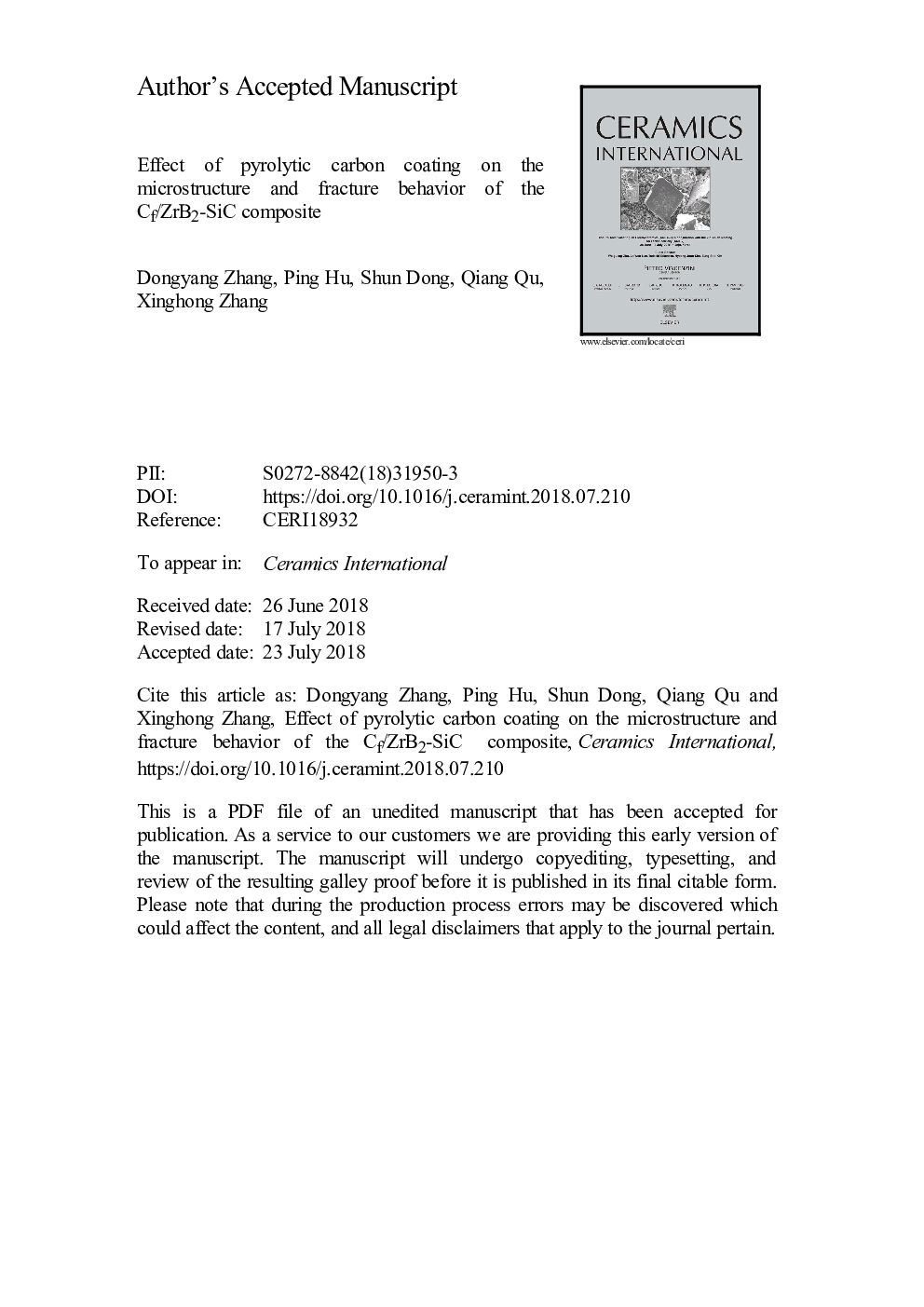| Article ID | Journal | Published Year | Pages | File Type |
|---|---|---|---|---|
| 10155431 | Ceramics International | 2018 | 23 Pages |
Abstract
The high sintering temperature and interface interaction seriously degraded the toughening effects of continuous carbon fiber in ZrB2-SiC ceramic. The pyrolytic carbon coated carbon fiber reinforced ZrB2-SiC composite (Cf-PyC/ZrB2-SiC) with desirable properties was successfully achieved via brushing nano ZrB2-SiC slurry followed by spark plasma sintering at relatively low sintering temperature. The fabricated Cf-PyC/ZrB2-SiC composite presented a non-brittle fracture feature and a remarkable enhancement in comparison with the ZrB2-SiC composite reinforced by the as-received carbon fiber (Cf-AS/ZrB2-SiC). The fracture toughness and critical crack size were increased from 5.97â¯Â±â¯0.18-7.66â¯Â±â¯0.24â¯MPaâ¯m1/2 and from 91.6 to 164.5â¯Âµm, respectively. A high work of fracture of 1915â¯J/m2 for Cf-PyC/ZrB2-SiC composite was achieved, almost four times higher than that of the Cf-AS/ZrB2-SiC composite (463â¯J/m2). Multiple toughening mechanisms contributed to such enhancement, such as crack deflection, fiber bridging, fiber pull-out and crack branching. This work provides a feasible approach to fabricate high-performance fiber reinforced ceramic composites having a high work of fracture.
Related Topics
Physical Sciences and Engineering
Materials Science
Ceramics and Composites
Authors
Dongyang Zhang, Ping Hu, Shun Dong, Qiang Qu, Xinghong Zhang,
